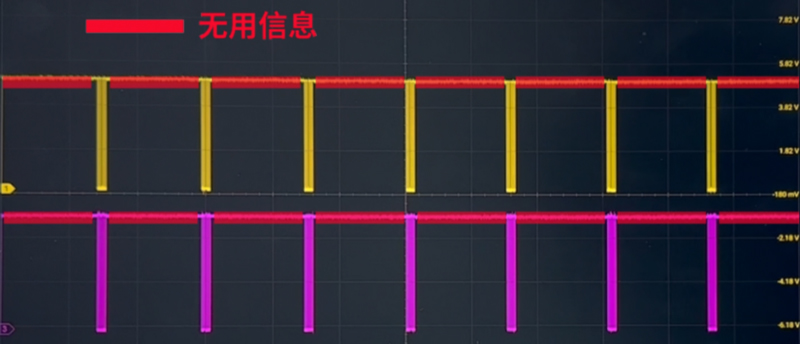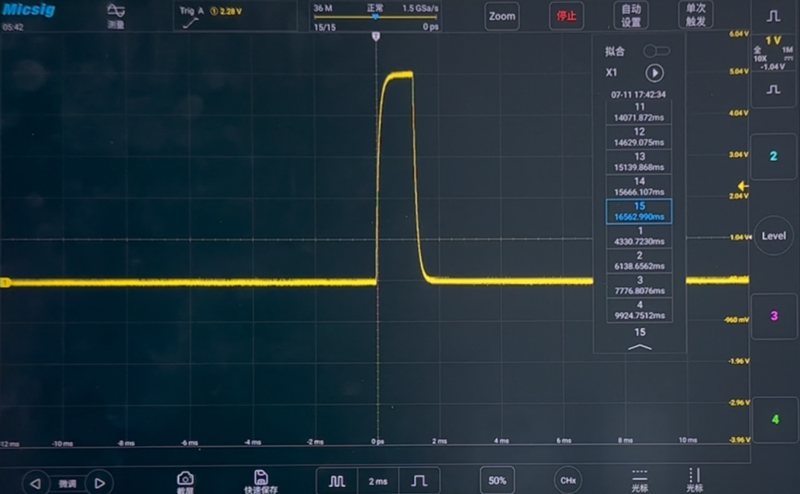Updated:2024-09-19
Digital oscilloscopes have become an indispensable tool for engineers in the field of modern electronic testing and measurement. They are not only capable of capturing and analyzing complex electronic signals but also provide in-depth data analysis, helping engineers optimize designs and enhance product performance. In this process, memory depth plays a crucial role. This article will delve into the concept of memory depth, its relationship with sampling rate and waveform recording duration, and how to use Micsig oscilloscopes to improve the utilization of memory depth through segmented storage technology, ensuring the integrity and accuracy of signals.

Memory depth, also known as record depth, is generally indicated by a specification such as 360Mpts, representing three hundred and sixty million sampling points (pts = points). Memory depth is a concept unique to digital oscilloscopes; analog oscilloscopes do not have this parameter. The measured signal is amplified by the front-end amplifier, then converted by the analog-to-digital converter, and the acquired signal is stored in the memory through the triggering system, which is finally processed and displayed on the screen. The capacity of the memory in this process is the physical medium that represents the size of the digital oscilloscope's memory depth.
A high memory depth oscilloscope can record waveforms for a long time without reducing the sampling rate, which is essential for analyzing complex signal patterns. However, memory depth does not exist in isolation; it is closely related to the sampling rate and waveform recording duration. The relationship between the three can be expressed through a simple formula: Sampling Rate = Memory Depth ÷ Waveform Recording Duration. This means that to maintain a high sampling rate over a long period, the oscilloscope must have sufficient memory depth.
I2C Bus Real-Time Measurement Demonstration

The above figure is an I2C bus signal measured by the Micsig 12-bit high-resolution oscilloscope MHO3-5004, where the expanded waveform shows a series of pulses.
We set the time base of the oscilloscope to 2 seconds, with one screen being 12 divisions, equivalent to recording a 24-second waveform. The oscilloscope's memory depth is 360Mpts, and the sampling rate at this time is 15MSa/s (left figure below). After acquisition and expansion, the signal is still a square wave.

We change the time base to 10ms and set the memory depth to 36kpts, with the sampling rate at this time being 300kSa/s (right figure above). We pause and expand to observe the waveform, and it can be seen that the original square wave has become completely distorted. The reason is the reduction of memory depth, leading to a decrease in sampling rate. Therefore, an oscilloscope with a large memory depth can ensure that even when recording signals for a long time, the signal will not be distorted.
But aside from this, is there any other way to ensure signal integrity and record a longer segment of signals?
Segmented Storage to Improve Memory Depth Utilization
Let's look at this I2C bus signal again, noting that a large part of the actual signal is useless information. What we really need to see is just a small part of the entire cycle. So, can we let the Micsig oscilloscope only record the useful segment and not record the useless segment, thus saving a lot of memory depth and alleviating or even solving the problem of signal distortion? This feature is actually segmented storage.

From the above figure, note that under the current time base, we need to observe a total of 7 signal segments. Without changing the memory depth, we directly open the sampling settings, select segmented storage, set the number of segments to 7, and then adjust the time base to the signal we need to observe, turn on segmented storage, and click on single trigger, the oscilloscope will capture the 7 segments of the signal one by one.

It can be seen that under the same memory depth conditions, the problem of signal distortion that existed before does not exist anymore after using segmented storage.
Segmented Storage Can Be Used for Multiple Single Triggers
In addition to improving the utilization of memory depth, segmented storage can also be used as multiple single triggers. For example, if you want to capture multiple instances of an occasional pulse signal, you can increase the time base, enter scrolling mode, and then expand the captured signal for observation. However, this will also record a long segment of useless signals.

If you use the segmented storage function of the Micsig 12-bit high-resolution oscilloscope MHO3-5004, this problem does not exist. Suppose we want to capture 15 segments of such signals, just set the number of segments to 15 in the segmented storage, set the corresponding trigger mode, and click on single trigger. The oscilloscope will show the total number of segments needed to be captured and the number of segments that have been captured. After the acquisition is complete, the oscilloscope will stop and display the appearance of each segment of the signal, which is very useful for capturing multiple instances of occasional signals.

In summary, the significant advantage of high memory depth in oscilloscopes is that it can help us record waveforms for a long time while still maintaining a sufficient sampling rate, thus ensuring that the signal is not distorted. The segmented storage feature not only improves the utilization of memory depth but can also be used as multiple single triggers, which is very convenient. At the same time, many Micsig oscilloscopes have the segmented storage function, including flat oscilloscopes TO2004, TO3004, ETO series, MDO series, and high-resolution oscilloscopes MHO3 and MHO6 series.

